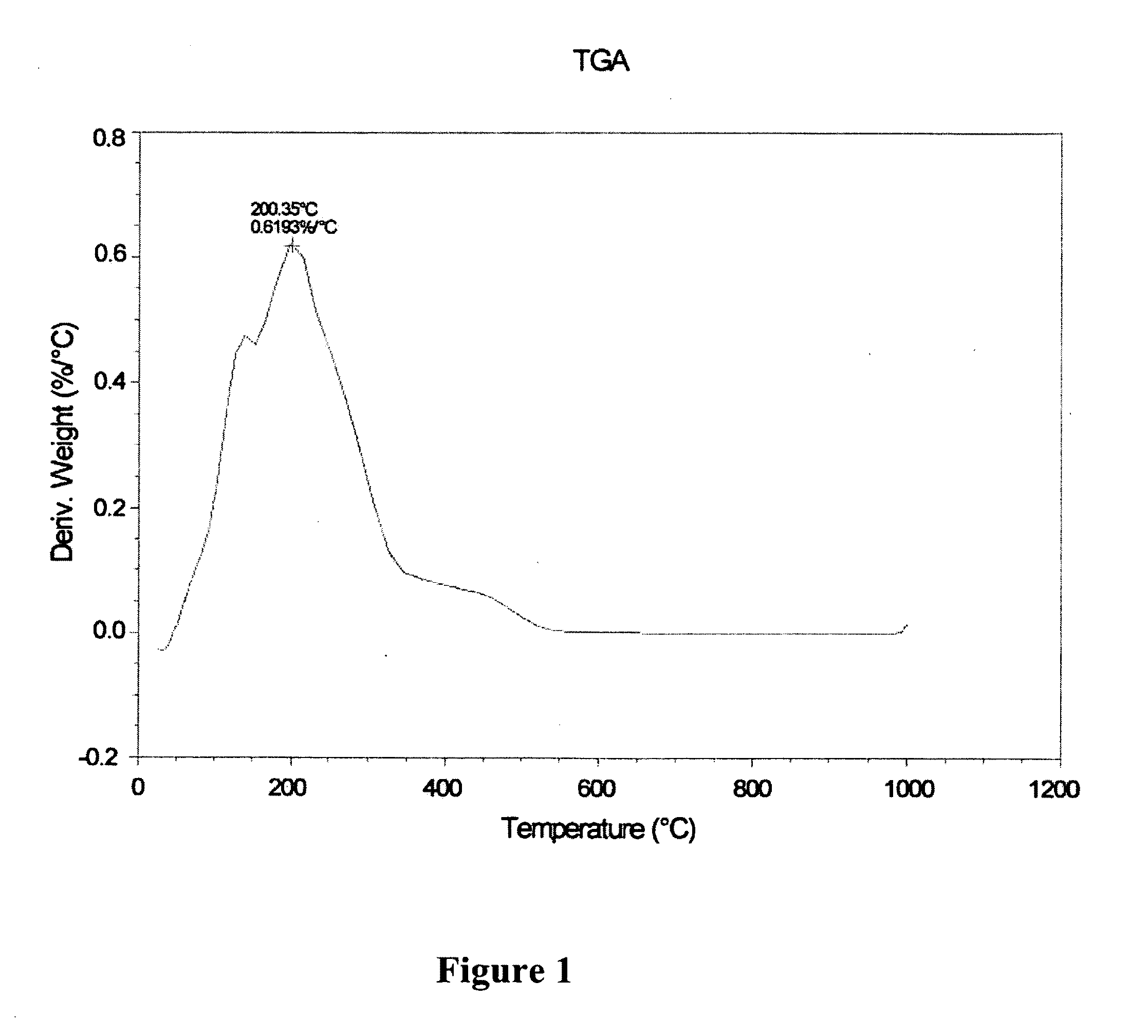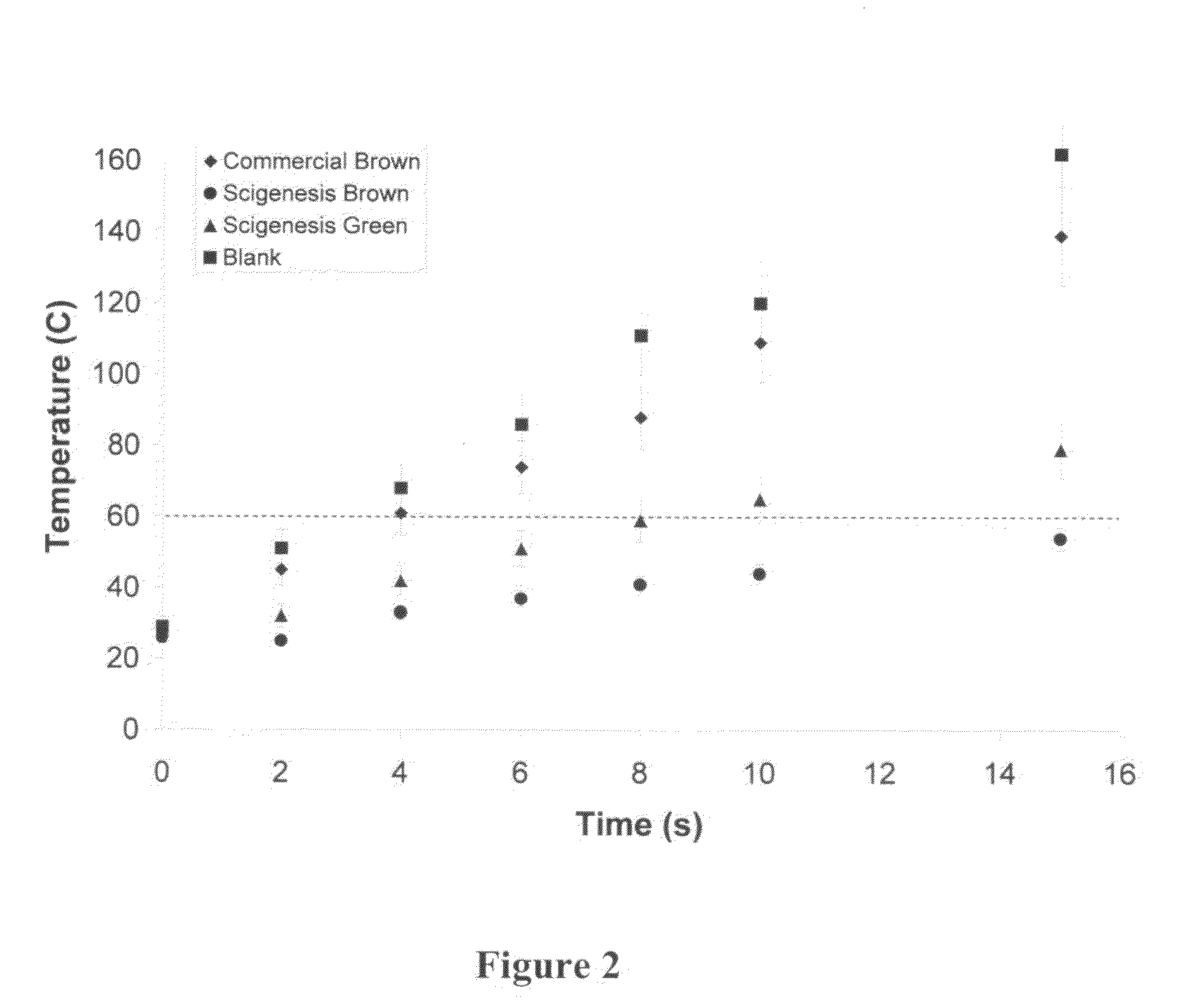Compositions and methods for protection of skin against thermal insult
a composition and skin technology, applied in the field of topically applied skin and face coatings, can solve the problems of aggravated heat injury and burns, skin paints are unlikely to protect the skin, and patents do not teach one skilled in camouflage ‘make-up’ or how to make or apply compositions to living skin, so as to prevent or lessen burns and improve or prevent damage to the skin
- Summary
- Abstract
- Description
- Claims
- Application Information
AI Technical Summary
Benefits of technology
Problems solved by technology
Method used
Image
Examples
working examples
Example 1
[0025]One novel composition of the present invention was prepared as follows from reagents as listed in Table 1 and Table 2, according to their respective weight percents in each phase. Table 1 represents the Pigment Phase and Table 2 represents the Hydrogel Phase and these two phases are mixed on about a 1:1 weight ratio to produce the topically-applied coating. Table 1 may alternatively be referred to as the Oil Phase and is prepared according to the following general procedure. Germaben II, Kathone CG, and AQ-48 were added to DI water at 46° C., held at constant temperature until dissolved, followed by cooling. Using a roto stator mixer, the pigment (−1.0 micron particles, green or brown) was added to the vessel and mixed at 15,000 rpms for 15 min. Stephan GMO, Pluracare F127, glycerin and propylene glycol were added, followed by 15 min mixing at 15,000 rpms. Other glycols in each Example that may be used include, but are not limited to, butylene glycol, 1,2 butane diol,...
example 2
[0027]A second variation of the topically-applied coating was prepared using the Hydrogel Phase from Table 2 and a modified Pigment Phase II according to Table 3. Reagents were added in the order listed and in the defined weight percent. Hydrogel Phase and Pigment Phase II were combined as described in Example 1, and films were found to be continuous and uniform. Cone calorimetry assay was performed under the following test conditions of 74° F., 48% RH, 80 kW / m2 heat flux, 30 g / s exhaust duct flow rate, horizontal sample orientation, 2 mm thick 0.0088 m2, and 8.3 g initial mass. The time to ignition (s), average heat release rate over the first 60 s (kW / m2) and the peak heat release rate (kW / m2) were 65 s, 30 kW / m2, and 73 kW / m2 for the ˜7 wt % brown pigmented sample, and 55 s, 32 kW / m2, and 50 kW / m2 for the comparable wt % green pigmented sample, respectively. Cone calorimetry assay was performed on a commercial sample (B.C.B. International) for comparison and produced a time to ig...
example 3
[0030]A third variation of the topically-applied coating composition was prepared using the Hydrogel Phase from Table 2 and a modified Pigment Phase III according to Table 4. Reagents were added in the order listed and in the defined weight percent. Table 4 representing the Pigment Phase and Table 1 representing the Hydrogel Phase compositions are combined on about a 1:1 weight ratio to produce the topically-applied coating. Table 4 may be alternatively referred to as the Oil Phase and is prepared according to the following general procedure. Germaben II, propylene glycol, glycerin, and DI water are added to a beaker and mixed under high shear conditions using an overhead stirrer fitted with a Cowels blade at 2500 rpm. The pigment particles (−1.0 micron particles, white or brown) are combined in about a 1:1 weight ratio using a DVZ-F 150 speed mixer (also called a Dual Asymmetric Centrifugal Laboratory Mixer) from Flacktek USA, Inc. at 2500 rpm for a five-minute duration. The coated...
PUM
| Property | Measurement | Unit |
|---|---|---|
| wavelength range | aaaaa | aaaaa |
| wavelengths | aaaaa | aaaaa |
| constant temperature | aaaaa | aaaaa |
Abstract
Description
Claims
Application Information
 Login to view more
Login to view more - R&D Engineer
- R&D Manager
- IP Professional
- Industry Leading Data Capabilities
- Powerful AI technology
- Patent DNA Extraction
Browse by: Latest US Patents, China's latest patents, Technical Efficacy Thesaurus, Application Domain, Technology Topic.
© 2024 PatSnap. All rights reserved.Legal|Privacy policy|Modern Slavery Act Transparency Statement|Sitemap


